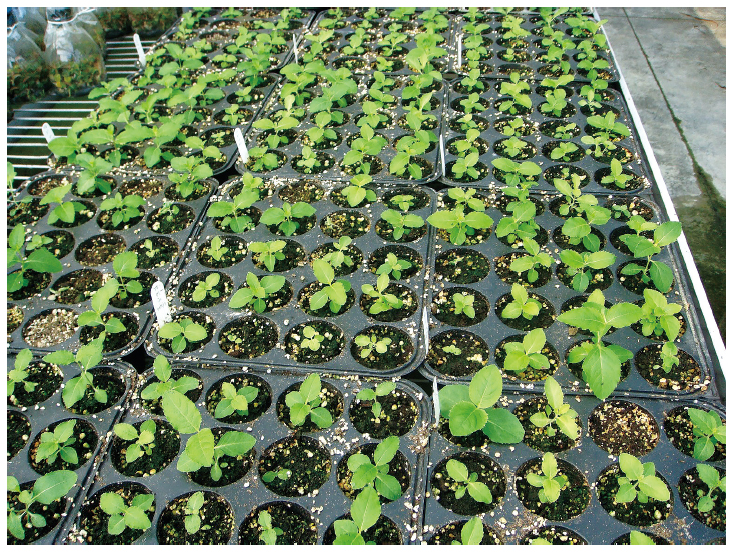All issues

Author:Chi-Ni Hsia*, Uei-Chern Chen, and Chin-Yi Tsao
Abstract:
Plants of Platycodon grandiflorum A. DC. are vastly used as traditional Chinese medicine. However, breeding of elite varieties by hybridization has been less effective because of lacking diverse genetic resources in this species. It is thought to produce polyploidy by using colchicine that could create novel genetic resources for breeding purposes. This study was conducted to investigate effects of colchicine concentration, exposure duration and colchicine used in the liquid or the solid medium on polyploidy induction by using in vitro seedlings of P. grandiflorum in different developmental stages. Ploidy of survival plantlets derived from colchicine treatments was analyzed by using a flow cytometer. Results showed that both exposure duration of colchicine and its interaction with developmental stage of seedlings had significant effects on the survival rate of explants. The best treatments with explant survival rate higher than 80% and polyploidy induction rate more than 60% were obtained either from 1.25 mM colchicine in liquid medium for 6 d exposure or from 2.50 mM colchicine in solid medium for 3 d exposure by using cotyledon stage seedlings as explants.
Key words:Jiegeng, Ploidy, Tetraploid, Colchicine, In vitro
Download:![]() PDF Links
PDF Links
- 1. Development of Tractor-Mounted Seedling Transplanter for Sweet Potato
- 2. Synergistic Effect of Additional Gas on the Toxicity of Phosphine to Sitophilus oryzae and Sitophilus zeamais (Coleoptera: Dryophthoridae)
- 3. Effects of Temperature and Solar Radiation on Growth Traits and Plant Elements in Purple Leafy Sweet Potato
 Submit your manuscript
Submit your manuscript
 Guide for authors
Guide for authors